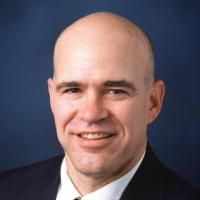Redoximorphic Bt horizons of the Calhoun CZO soils exhibit depth-dependent iron-oxide crystallinity
Date
2019-02-12
Journal Title
Journal ISSN
Volume Title
Repository Usage Stats
views
downloads
Citation Stats
Abstract
© 2018, Springer-Verlag GmbH Germany, part of Springer Nature. Purpose: Iron (Fe) oxyhydroxides and their degree of ordering or crystallinity strongly impact the role that Fe plays in ecosystem function. Lower crystallinity phases are generally found to be more reactive than higher crystallinity phases as sorbents for organic matter and chemical compounds, as electron acceptors for organic matter mineralization or as electron donors for dysoxic respiration. We investigated Fe solid phase speciation as a function of soil depth in a redoximorphic upland soil profile. Materials and methods: We examined a redoximorphic upland soil profile, which displayed alternating Fe-enriched and Fe-depleted zones of the Bt horizons with platy structure from 56 to 183 cm depth at the Calhoun Critical Zone Observatory in South Carolina, USA. Redoximorphic Fe depletion and enrichment zones were sampled to enable a detailed investigation of Fe mineralogy during redox transformations. All samples were characterized by total elemental analysis, X-ray diffraction, and 57 Fe Mössbauer spectroscopy. Results and discussion: Total Fe in the Fe-enriched and Fe-depleted zones was 26.3 – 61.2 and 15.0 – 22.7 mg kg −1 soil, respectively, suggesting periodic redox cycling drives Fe redistribution within the upland soil profile. The Mössbauer data clearly indicated goethite (56 – 74% of total Fe) and hematite (7 – 31% of total Fe) in the Fe-enriched zones, with the proportion of hematite increasing with depth at the expense of goethite. In addition, the overall crystallinity of Fe phases increased with depth in the Fe-enriched zones. In contrast to Fe-enriched zones, Fe-depleted zones contained no hematite and substantially less goethite (and of a lower crystallinity) but more aluminosilicates-Fe(III) (e.g., hydroxy-interlayered vermiculite, biotite, kaolinite) with XRD and Mössbauer data suggesting a shift from oxidized biotite-Fe(III) at depth to hydroxy-interlayered vermiculite plus low-crystallinity goethite in the Fe-depleted zones in the upper Bt. Conclusions: Our data suggest the varied crystalline states of hematite and goethite may be important for Fe reduction over long-term time scales. The persistence of low-crystallinity Fe phases in Fe depletion zones suggests that both dissolution and re-precipitation events occur in the Fe-depleted layers. These variations in Fe phase abundance and crystallinity within similar redoximorphic features suggest that Fe likely shifts ecosystem roles as a function of soil depth and likely has more rapid Fe cycling in the upper Bt horizons in upland soils, while serving as a weathering engine at depth.
Type
Department
Description
Provenance
Subjects
Citation
Permalink
Published Version (Please cite this version)
Publication Info
Chen, C, D Barcellos, DD Richter, PA Schroeder and A Thompson (2019). Redoximorphic Bt horizons of the Calhoun CZO soils exhibit depth-dependent iron-oxide crystallinity. Journal of Soils and Sediments, 19(2). pp. 785–797. 10.1007/s11368-018-2068-2 Retrieved from https://hdl.handle.net/10161/21233.
This is constructed from limited available data and may be imprecise. To cite this article, please review & use the official citation provided by the journal.
Collections
Scholars@Duke

Daniel D. Richter
Richter’s research and teaching links soils with ecosystems and the wider environment, most recently Earth scientists’ Critical Zone. He focuses on how humanity is transforming Earth’s soils from natural to human-natural systems, specifically how land-uses alter soil processes and properties on time scales of decades, centuries, and millennia. Richter's book, Understanding Soil Change (Cambridge University Press), co-authored with his former PhD student Daniel Markewitz (Professor at University of Georgia), explores a legacy of soil change across the Southern Piedmont of North America, from the acidic soils of primary hardwood forests that covered the region until 1800, through the marked transformations affected by long-cultivated cotton, to contemporary soils of rapidly growing and intensively managed pine forests. Richter and colleagues work to expand the concept of soil as the full biogeochemical weathering system of the Earth’s crust, ie, the Earth’s belowground Critical Zone, which can be tens of meters deep. The research examines decadal to millennial changes in the chemistry and cycling of soil C, N, P, Ca, K, Mg, and trace elements B, Fe, Mn, Cu, Be, Zr, and Zn across full soil profiles as deep at 30-m. Since 1988, Richter has worked at and directed the Long-Term Calhoun Soil-Ecosystem Experiment (LTSE) in the Piedmont of South Carolina, a collaborative study with the USDA Forest Service that quantifies how soils form as natural bodies and are transformed by human action, and a study that has grown to become an international model for such long-term soil and ecosystem studies. In 2005, Richter and students initiated the first comprehensive international inventory project of the world’s LTSEs, using an advanced-format website that has networked metadata from 250 LTSEs. The LTSEs project has held three workshops at Duke University, NCSU's Center for Environmental Farming Systems, and the USDA Forest Service's Calhoun Experimental Forest and Coweeta Hydrologic Laboratory, hosting representatives from Africa, Asia, Australia, Europe, and the Americas. Richter's 60-year old Long Term Calhoun Soil and Ecosystem Experiment is linked to similar experiments and platforms around the world via the ‘Long-Term Soil-Ecosystem Experiments Global Inventory’, assembled by Dan Richter, Pete Smith, and Mike Hofmockel."He is an active member of the International Commission on Stratigraphy’s Working Group on the Anthropocene. Richter has written in the peer-reviewed literature about all of these projects, and in November 2014 his soils research at the Calhoun and his soils teaching were featured in Science magazine.
Unless otherwise indicated, scholarly articles published by Duke faculty members are made available here with a CC-BY-NC (Creative Commons Attribution Non-Commercial) license, as enabled by the Duke Open Access Policy. If you wish to use the materials in ways not already permitted under CC-BY-NC, please consult the copyright owner. Other materials are made available here through the author’s grant of a non-exclusive license to make their work openly accessible.
